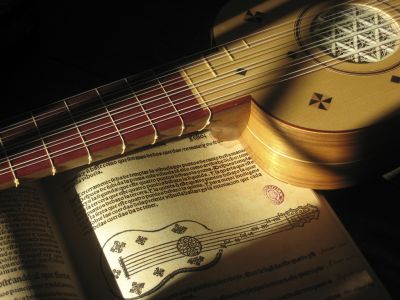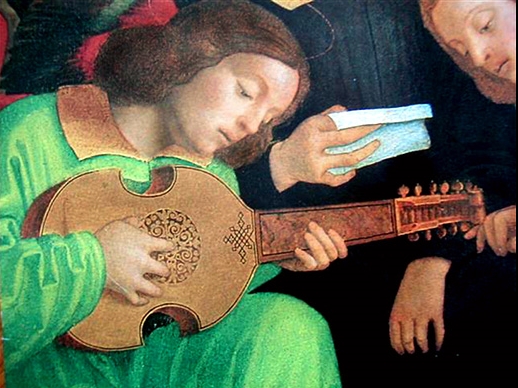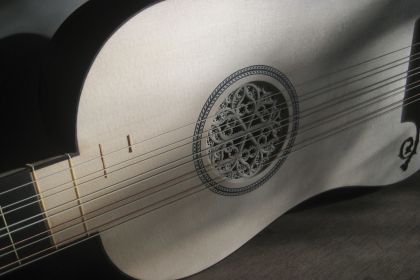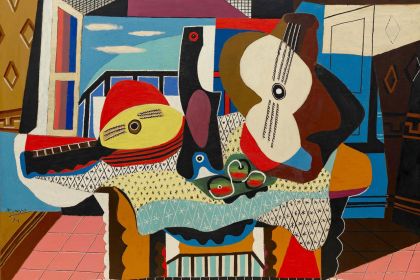Vihuela
The first known collection for the vihuela inspired early guitar repertoire

The vihuela by Marcos Kaiser
It is fair to call the guitar one of the leading world instruments in terms of popular demand which is only slightly inferior to that of the piano's, including the performers. Presently, an estimated number of guitarists reaches as high as 50 million which is roughly comparable to the population of Europe during the Renaissance.
Although the modern shape of the classical guitar was formed close to the end of Romanticism, its many predecessors had represented the music of various cultures for thousands of years. Among stringed instruments developed during the Renaissance, the vihuela can be singled out as the most historically significant since it lent the Baroque guitar both its shape and repertoire.
It is believed that the first vihuelas appeared in the Kingdom of Aragón, now modern Spain, in the middle of the 15th century as a modification for the lute with a flat back surface. With its customary five and sometimes six double strings in its simple design, the vihuela quickly gained popularity in Italy, Spain, and Portugal, spawning many design varieties which included bowed models that would become the predecessors of the viol.
Madonna Enthroned altarpiece by Girolamo dia Libri, c.1520:


The earliest known treatise containing musical examples and tutorials for the vihuela was published by the Spanish composer Luis de Milán in 1536. In his book Libro de música de vihuela de mano intitulado El maestro, the composer combined pieces of various genres, equipping them with theoretical aspects and exercises of ascending difficulty level that could provide an opportunity to master such skills as solo passages, arpeggios, accompaniment for vocals and polyphonic textures.
Since its publication, Luis de Milán’s book has influenced many generations of musicians and remains a popular source for modern guitar players. For example, the contemporary virtuoso Julian Bream, who was behind the revival of the lute, vihuela and baroque guitar, mentioned Milán's book as the source for his repertoire:
I went through a number of old guitar books – baroque guitar books, as well as the printed vihuela collections, and I spent a lot of time just going through as much as I could of the works of Santiago de Murcia, Gaspar Sanz, Guerrero, Milan and Mudurra.
Immersed in the music for these early instruments, Julian Bream also discovered the unique advantages of baroque guitar:
...it was a refreshing thing to do, having played the ordinary Spanish guitar for so many years, to now find out about this earlier music and how it was really played, I thought initially that the five-string guitar was a rather limited instrument compared to the modern guitar, but once I became involved in its literature and the music, I found that it was a perfectly complete instrument for what it wanted to express musically.
Watch Julian Bream play Fantasia XXIII by Luis De Milan:
The second known publication of the vihuela music was also released in Spain by the composer Luis de Narváez in 1538. In six volumes of his book Los seys libros del Delphin de música de cifras para tañer, the author offers both his vihuela's pieces and works by other composers of his time including Josquin des Prez and Nicolas Humbert.
Containing citations of various genres, the Narváez's collection made history as the first source of music in the form of variations.
Watch Valery Sauvage play Luys de Narváez's variations of Josquin des Prez's Mille Regretz and La Cancion del Emperador:



